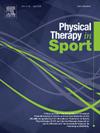A pilot study on the effects of multimodal cervical exercise training on clinical concussion risk factors in female athletes
IF 2.2
3区 医学
Q1 REHABILITATION
引用次数: 0
Abstract
Objectives
The primary objective of the current study was to examine whether a 7-week multi-modal cervical training intervention was effective in improving sport related concussion risk factors in female varsity athletes.
Design
A quantitative experimental research design involving a prospective exercise intervention.
Methods
Seventeen female athletes (age 19.5 ± 1.42 years) attended two data collection sessions (i.e., baseline and post-testing) involving assessments in anthropometrics, isometric and dynamic neck strength, and balance control. The intervention group (n = 8) participated in a seven-week multi-modal neuromuscular training program for the cervical musculature. The control group (n = 9) was not provided with external training aside from what was performed within their sports team which was not cervical spine specific.
Results
The intervention group experienced significant improvements in neck-girth, flexor-extensor strength ratio, cervical muscular endurance, isometric and dynamic strength, and balance control.
Conclusion
The findings suggest that the intervention was effective in improving clinical measures related to concussion risk. Prior research suggests that improved size, strength, endurance, symmetry, and postural control, improve an athlete's ability to stabilize the head. This improved stability may cause athletes to have reduced motion of the head following a concussive load, consequently reducing SRC risk but should be investigated further.
多模式颈椎运动训练对女运动员临床脑震荡危险因素影响的初步研究
本研究的主要目的是研究7周的多模式颈椎训练干预是否能有效改善女大学运动员运动相关的脑震荡危险因素。设计涉及前瞻性运动干预的定量实验研究设计。方法17名女性运动员(年龄19.5±1.42岁)参加了两个数据收集阶段(即基线和测试后),包括人体测量学、等长和动态颈部力量以及平衡控制的评估。干预组(n = 8)参加了为期7周的颈部肌肉多模式神经肌肉训练计划。对照组(n = 9)除了在运动队中进行的非颈椎特异性训练外,未接受外部训练。结果干预组在颈围、屈伸肌力比、颈肌耐力、等长和动态肌力、平衡控制等方面均有显著改善。结论该干预措施对改善脑震荡风险相关的临床措施是有效的。先前的研究表明,提高尺寸、力量、耐力、对称性和姿势控制,可以提高运动员稳定头部的能力。这种稳定性的提高可能导致运动员在震荡负荷后头部的运动减少,从而降低SRC的风险,但需要进一步研究。
本文章由计算机程序翻译,如有差异,请以英文原文为准。
求助全文
约1分钟内获得全文
求助全文
来源期刊

Physical Therapy in Sport
医学-康复医学
CiteScore
4.50
自引率
8.30%
发文量
125
审稿时长
39 days
期刊介绍:
Physical Therapy in Sport is an international peer-reviewed journal that provides a forum for the publication of research and clinical practice material relevant to the healthcare professions involved in sports and exercise medicine, and rehabilitation. The journal publishes material that is indispensable for day-to-day practice and continuing professional development. Physical Therapy in Sport covers topics dealing with the diagnosis, treatment, and prevention of injuries, as well as more general areas of sports and exercise medicine and related sports science.
The journal publishes original research, case studies, reviews, masterclasses, papers on clinical approaches, and book reviews, as well as occasional reports from conferences. Papers are double-blind peer-reviewed by our international advisory board and other international experts, and submissions from a broad range of disciplines are actively encouraged.
 求助内容:
求助内容: 应助结果提醒方式:
应助结果提醒方式:


